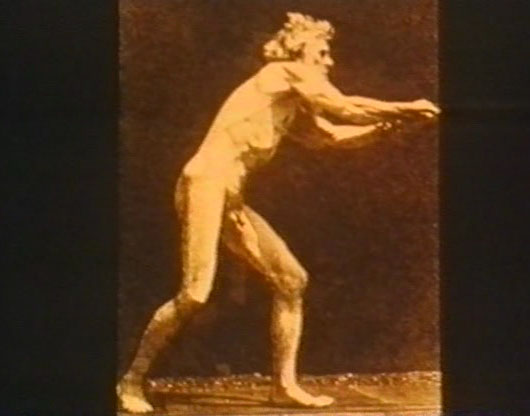“He was the first and only zoopraxographer.”

Hour-long doc about the man who invented a form of motion photography (the famous series of tripwire-triggered photos of horses running), spending half his career as a successful still photographer, and the other half capturing and studying human and animal motion with his zoopraxiscope.
Visually, the movie is mostly composed of Muybridge’s work, nicely assembled and presented, including moving reproductions of his motion series. Voiceover tells us his story (memorable detail: he was acquitted for murdering his wife’s lover in 1875).
For his location still photography Muybridge (pronounced “Edward Mybridge” – people added extra letters to seem fancy back then) travelled with a “darkroom wagon”, foreshadowing Medvedkin’s cinetrain.
Muybridge photographed the effects of the Great San Francisco Earthquake… but not the one in 1906 – this is from October 1868!

Muybridge died in 1904, having seen the birth of Edison’s cameras and Lumiere’s cinema which shuttled his own inventions to the sidelines. It would be 90 more years before The Matrix would combine Edison’s motion photography with Muybridge’s circular camera arrays to create the bullet-time effect. Muybridge’s photographs of San Francisco are valued as a record of the city before it was leveled by the Even Greater Earthquake of 1906.
Movie is narrated by two-time Cannes best-actor-winner (and future Blue Velvet crooner) Dean Stockwell. Editor Morgan Fisher went on to make that movie I read about which is composed of all insert shots, and the same year, director Andersen made the stock-footage masterpiece Los Angeles Plays Itself. All Movie Guide says this film took ten years to make, and J. Rosenbaum calls it “one of the best essay films ever made on a cinematic subject.”
Muybridge self-portrait:
